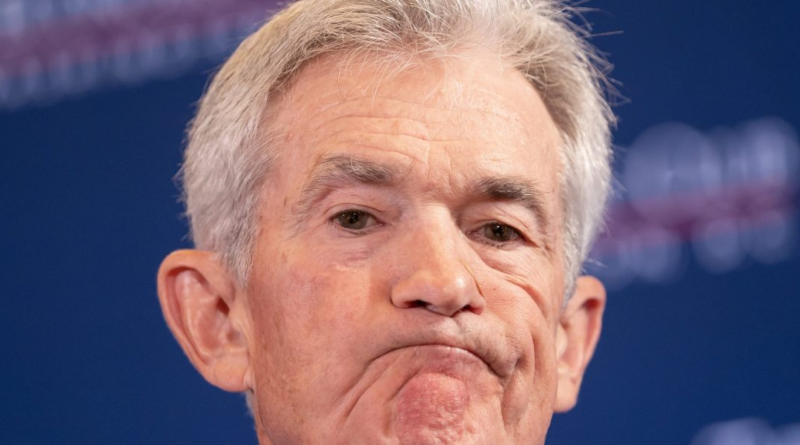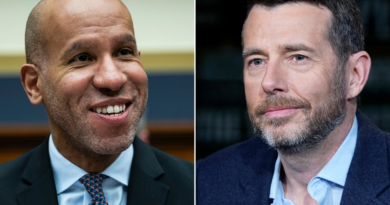Even September may be too late for a rate cut to swing the U.S. economy out of a recession, warns former Fed president
While Wall Street is largely convinced September will mark the month when Fed chairman Jerome Powell at last drops the base rate, some experts are warning it may already be too late to save the economy from a recession.
The likes of Goldman Sachs and UBS are pricing in a first cut before the November presidential elections—which may anger White House hopeful Donald Trump—but not as early as the Fed’s next meeting in July.
However Bill Dudley, the former president of the Federal Reserve Bank of New York, believes Powell and the Fed need to cut rates as soon as possible.
Having led the New York institution from 2009 to 2018, Dudley is a powerful voice on monetary policy who was previously in the “higher for longer” camp.
However the tenth president of the NY Fed said he had simply “changed his mind” in an opinion piece published by Bloomberg Wednesday.
“The facts have changed, so I’ve changed my mind. The Fed should cut, preferably at next week’s policy-making meeting,” Dudley wrote.
Dudley cited the consumer slowdown noted by the likes of Bank of America CEO Brian Moynihan and Citigroup CEO Jane Fraser, who have said while consumers are generally holding up “cracks” are beginning to appear at the lower end of the income spectrum.
What is now appearing are more significant fissures: car repossessions are up 23% compared with the same period last year, while the delinquency rate on consumer loans has also been steadily ticking up—according to data from the St Louis Fed.
These factors, combined with the fact that unemployment is also creeping up, led Dudley to rethink his advice to Powell and his six peers on the board.
Some economists are skeptical about quite how bad the jobless rate is. The U.S. Department of Labor’s most recent figures reveal a 20,000 person increase from the week prior, though experts like Wharton Professor Jeremy Siegel note: “Some attribute the rise in jobless claims to Hurricane Beryl’s impact on Texas which should be reversed in the coming weeks.”
This counter is not enough to convince Dudley the economy is not on a bumpy road downwards. He adds: “Although it might already be too late to fend off a recession by cutting rates, dawdling now unnecessarily increases the risk.”
The Sahm Rule
At the heart of Dudley’s concern is a metric known as the Sahm Rule which in the past has been fairly accurate in signaling when the U.S. is about to head into a recession.
The Sahm Rule looks at two factors: the current three-month moving average of U.S. unemployment and the lowest three-month moving average of U.S. unemployment over the past year.
If the current average is higher than the lowest average by more than half a percentage point, the American economy is headed for a recession.
The recession indicator, developed by macroeconomist Claudia Sahm, tipped higher in the early months of 2020 for example (proceeded by the COVID recession) and latter months of 2008 (predating the 2008 recession).
Other notable peaks in the indicator with a subsequent or coinciding recession include the double dip recession of 1980 and the Dotcom recession of 2001.
In the Sahm Rule’s latest update for June 2024—with 0.50 percentage points as the benchmark not to cross—the figure stood at 0.43.
Why not cut?
Members of the Fed board have been hinting they’re ready to think about cutting—but not just yet.
Last week Federal Reserve Governor Christopher Waller said the time for rate cuts is “drawing closer” but hasn’t yet reached its “final destination.”
Likewise New York Fed President John Williams told the Wall Street Journal there are “positive signs” that inflation is headed in the right direction, but would like to see some further data before making any cut decisions.
Dudley outlines three answers to the question: “Why not now?”
“First, the Fed doesn’t want to be fooled again,” he explained. “Late last year, a moderation in inflation turned out to be temporary… So officials might be hesitant to declare victory.”
Second, Dudley believes Powell may want to build as much consensus as possible for his move—making sure the likes of Waller and Williams see all the data they need to approve the cut.
And lastly, Dudley writes Fed officials don’t seem particularly worried about unemployment breaching the Sahm Rule because they believe rapid labor growth is driving up the indicator as opposed to a rise in layoffs.
On this, Dudley objects: “The Sahm Rule accurately predicted recessions in the 1970s, when the labor force was also growing rapidly.”




